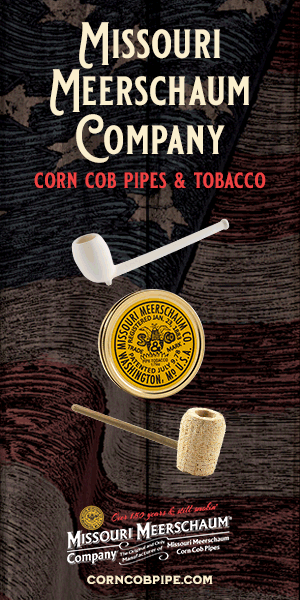I have quite a bit of bulk tobacco stored in sealed ball or mason quart jars. I've noticed that after the first tightening, a retightening or two is required about a week later. Altho I'll recycle the jars, I always use new lids for every batch, being careful to get a perfect seal. Anyone else notice or do this retightening? Today, after tightening the daylights on four dozen quart jars I decides to do something I've never done before. Took a large pot and melted 30 - 40 neutral white unscented candles in it. I then dipped the top of the jar a couple times in the molton wax, and inverted them onto newspaper to dry. I wanted a visible wax seal between the glass and the metal. Now I have cellared row upon row of truly sealed ball jars, that I'm comfortable can last the duration. Anyone ever done this before?
Sealing Ball Jars
- Thread starter kashmir
- Start date
You are using an out of date browser. It may not display this or other websites correctly.
You should upgrade or use an alternative browser.
You should upgrade or use an alternative browser.
SmokingPipes.com Updates
Watch for Updates Twice a Week
- Status
- Not open for further replies.
I have not done the wax sealing you have described. I have put a full jar into the microwave for about 15 - 30 seconds and then put the lid on it quickly. This creates a vacuum that worked pretty well to me.
In my experience, over time it seems that the longer a jar is sealed the harder it is for me to open. This may be due to the extreme humidity and temperature shifts in Houston. I had a jar the other day, I had to beat the metal ring with the fat end of a butter knife after running it under hot water just to get it to move a little, all said I had to get a new top for the jar when I was done.
In my experience, over time it seems that the longer a jar is sealed the harder it is for me to open. This may be due to the extreme humidity and temperature shifts in Houston. I had a jar the other day, I had to beat the metal ring with the fat end of a butter knife after running it under hot water just to get it to move a little, all said I had to get a new top for the jar when I was done.
I never need to firm-up the threaded bands on lids; but then again I only use the smallest jars -- the ½ pint size.
The strategy is to keep most of the bulk tobacco sealed and aging while I access a small portion of my stock. I have
read about sealing the tops of jars with wax, as you described, so it's not like you're the only one with this issue.
The strategy is to keep most of the bulk tobacco sealed and aging while I access a small portion of my stock. I have
read about sealing the tops of jars with wax, as you described, so it's not like you're the only one with this issue.
I wouldn't worry too much about it. If you are getting a vacuum seal then you technically don't even need the screw-on part of the lid. If the lids are depressed then you know your seal is intact.
Here is a pertinent selection from the National Center for Home Food Preservation:
Here is a pertinent selection from the National Center for Home Food Preservation:
http://nchfp.uga.edu/how/general/recomm_jars_lids.htmlDo not retighten lids after processing jars. As jars cool, the contents in the jar contract, pulling the self-sealing lid firmly against the jar to form a high vacuum.
If rings are too loose, liquid may escape from jars during processing, and seals may fail.
If rings are too tight, air cannot vent during processing, and food will discolor during storage. Over tightening also may cause lids to buckle and jars to break, especially with raw-packed, pressure-processed food.
Screw bands are not needed on stored jars. They can be removed easily after jars are cooled. When removed, washed, dried, and stored in a dry area, screw bands may be used many times. If left on stored jars, they become difficult to remove, often rust, and may not work properly again.
I read in the 1930s Dunhill used to supply private My Mixture blends to loyal customers in far flung corners of the Empire (India and the Far East). And after pressing the private blends into solid bricks, they'd wrap em in burlap, and dip the whole thing in molten high temp. sealer wax to secure a seal. Baccy stored and shipped this way was said to last decades. I divide a pound into two wide mouth quart Bell jars, using new lids. I don't usually heat the jars to effectuate a seal, so my lids never pop inwards to form a vacuum. Perhaps I should, as I've heard a little stoving does no harm, and according the Fred Hanna can improve a blend by expediting or mimicking ageing. Course he recommends stoving factory sealed tins, not bulk in jars. I guess I'm just worried about an air leak. Hence my lid waxing procedure. I must say tho that it does give me a psychological feeling of security knowing my jars are well sealed. I mean I've got a couple hundred quart jars down there in the cellar.
Well, I don't think the extra steps will hurt you any. However, for decades I have successfully reused lids and never did anymore than screw the lids on tight and had excellent results. The key is simply "air-tight". Beyond that nothing else is necessary in my personal experience.
__________________________________________________________________________________________________________________

__________________________________________________________________________________________________________________

Vacuum sealing is not all that it is cracked up to be. Craig Tarler (C&D) believed in not vacuum sealing his manufactctured tins in order to leave some air in the tin to allow for aging. I agree with his theory. They follow his path to this day.
__________________________________________________________________________________________________________________

__________________________________________________________________________________________________________________

I have noticed this as well and do tighten the lids. However, after awhile, the jars tend to seal themselves. I used to nuke the jar before packing and putting the lids on, but now I just pack and store.
Sorry for the typo: Ball not bell.
The Bell Jar is American writer and poet Sylvia Plath's only novel, which was originally published under the pseudonym "Victoria Lucas" in 1963. The novel is semi-autobiographical with the names of places and people changed. The book is often regarded as a roman à clef, with the protagonist's descent into mental illness paralleling Plath's own experiences with what may have been clinical depression. Plath committed suicide a month after its first UK publication. The novel was published under Plath's name for the first time in 1967 and was not published in the United States until 1971, pursuant to the wishes of Plath's mother and her husband Ted Hughes.
The Bell Jar is American writer and poet Sylvia Plath's only novel, which was originally published under the pseudonym "Victoria Lucas" in 1963. The novel is semi-autobiographical with the names of places and people changed. The book is often regarded as a roman à clef, with the protagonist's descent into mental illness paralleling Plath's own experiences with what may have been clinical depression. Plath committed suicide a month after its first UK publication. The novel was published under Plath's name for the first time in 1967 and was not published in the United States until 1971, pursuant to the wishes of Plath's mother and her husband Ted Hughes.
Bell jars to Ball jars to Sylvia Plath.
This place is, hands down, my favorite waystation on the Internet.
Hell, I didn't even know how how to dry out my evening smokes when I showed up a year and a half ago. And now I'm re'furbing estates, swapping tobacco, cellaring tobacco, cellaring tobaccos I don't particularly care for and buying Italian pipes.
My life has become unglued.
Thanks, everybody.
Fnord
This place is, hands down, my favorite waystation on the Internet.
Hell, I didn't even know how how to dry out my evening smokes when I showed up a year and a half ago. And now I'm re'furbing estates, swapping tobacco, cellaring tobacco, cellaring tobaccos I don't particularly care for and buying Italian pipes.
My life has become unglued.
Thanks, everybody.
Fnord
The sealing compound on ball jars is heat activated and soft, so if you tighten it down it will compress slowly then need another turn or so to get real tight again, you can speed it up by putting your clothes iron on "cotton" and putting it on the lid with the ring and get them pretty hot (but not to hot) and tightening them down hot. This will allow the compound to soften enough to get them real tight on the first go. I haven't tried the wax method but it sounds like it would be very effective, I'll have to give it a try
Here's Bob Tate's take on it - near the bottom
http://pipesmagazine.com/python/pipe-tobacco/pipe-tobacco-storage/
http://pipesmagazine.com/python/pipe-tobacco/pipe-tobacco-storage/
- Status
- Not open for further replies.








